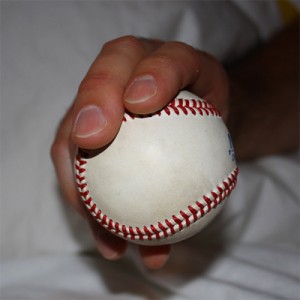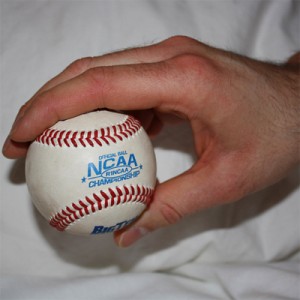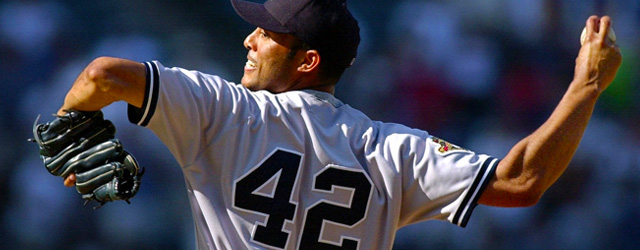Once a pitcher has a good command of his fastball and he can throw his change-up for strikes, it’s time to work on a pitch that incorporates a little movement. Enter the cut fastball, or cutter. The cut fastball is a great pitch for both the younger and more experienced pitcher to learn. For the youth pitcher, it will allow him to throw a pitch with some “break” without the added stress to the arm that a curveball or slider might bring. For the more experienced pitcher, the cutter can be used off of his regular fastball to give the hitter a different look and keep the pitcher from being predictable.
The baseball can be gripped a number of ways to throw a cutter. But, what makes the cutter an effective pitch is its ability to appear like a fastball when released from the pitcher’s hand. A good cutter will have late break and the hitter will have little time to make an adjustment with his swing when he has already committed to what he believes is a fastball. Often times, the pitch will result in a swinging strike or a weak ground ball. As a pitcher, it’s always nice to see some broken wood too!
Cut Fastball Grip and Execution

There are many different ways to hold the ball for a cut fastball, but generally, the grip is a bit off-center from a normal 4-seam fastball grip. Both the forefinger and middle finger should be close together and still placed across the seams. The thumb should be under the ball and a little off center as well. There should be a space between the baseball and palm of the hand, and the baseball should be held loosely with the fingers. This grip allows the baseball to have backspin but on a tilted axis. Thus, allowing the baseball to generate some movement.
The pitcher should not turn his hand or snap his wrist upon release. Instead, he should use his fingers to pull down on the seams similar to his normal fastball. He can even play with the amount of pressure he puts on his middle finger. By applying slightly more pressure with his middle finger, the pitcher can help generate better spin at release point.

While the four seam fastball is more or less a straight pitch, the cut fastball has late break toward the glove side of the pitcher. In other words, a RHP’s cutter would break away from a right-handed hitter and dive in to a left-handed hitter. The movement is mostly horizontal, with some really good cutters breaking a small distance vertically as well. This late breaking movement is what makes the cut fastball such a great pitch. A good pitcher will use his 2-seam and 4-seam fastball to set up his cutter, and vice versa.
This does not mean the four seam fastball becomes less effective, but instead means that the pitcher needs to learn when to throw the four seamer for it to be effective. In addition, if he can locate the pitch well, then the it becomes even more effective.
Check out this clip from the show Sport Science and what they had to say about a cut fastball:

Leave a Reply